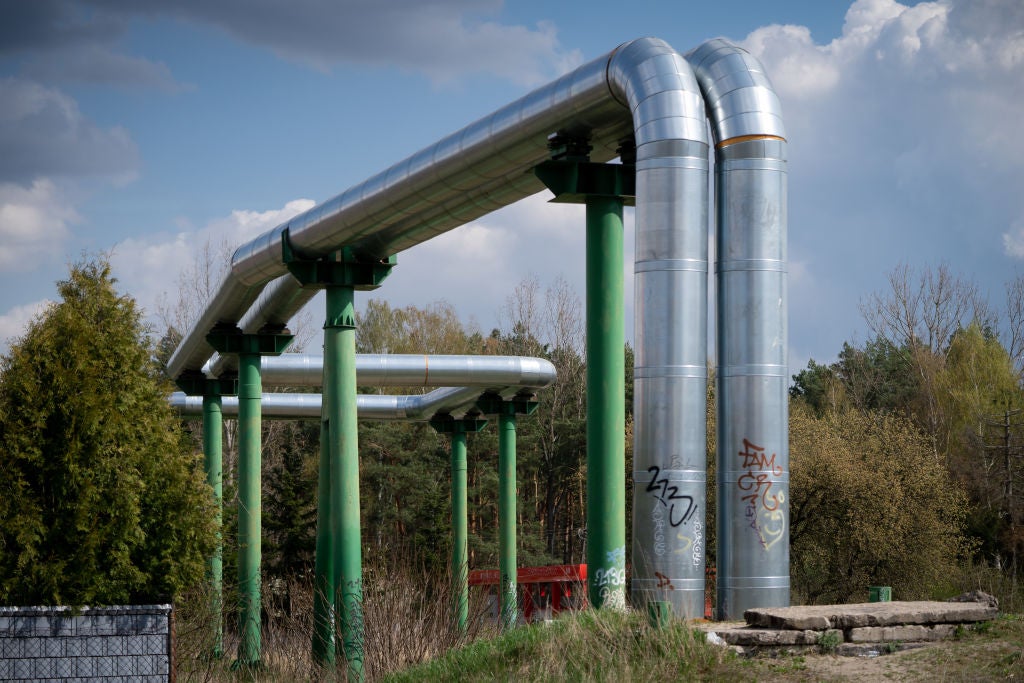As the EU desperately tries to find ways to keep hundreds of millions of Europeans warm this winter without the usual stream of Russian gas, our over-dependence on this fossil fuel has become woefully apparent. Given this, it would seem self-evident that the expansion of fossil gas-based heat in Europe ends here – and yet. An EU Modernisation Fund for energy systems may finance conversions of existing coal-fired heat and power plants to gas. This is especially troublesome for district heating, which requires major investments to switch to renewable sources. Any further investments in gas-based district heating could stall this development for decades to come.

District heating provides 15% of heat in the EU and is mostly concentrated in Nordic countries and central and eastern Europe (CEE). Many of the district heating systems in CEE have been operational for nearly a century and their age is showing. They are often very inefficient and need massive investments in pipe retrofits and digitalised systems for smarter controls, as well as building renovations that improve insulation. Once that is done, they can incorporate more renewable heat sources. All this requires massive long-term investments, making such projects prime candidates for public financing from sources like the Modernisation Fund.
The Modernisation Fund is one of the EU’s newer financial instruments, with its first disbursements in July 2021. It is financed primarily from the revenues of the EU Emissions Trading System (EU ETS) with some co-financing from beneficiary member states. Its objectives seem straightforward: help lower-income member states modernise their energy systems through adding new renewables, improving energy efficiency and supporting the just transition of coal-dependent regions. Most of the projects that have requested financing from this fund, such as building insulation projects in Estonia and Lithuania, the modernisation of district heating and cooling networks in Slovakia, or renewable-based heat in Hungary, fit these criteria.
However, since the first disbursement, almost €167m ($172.17m) has also been granted to potentially support fossil gas-fired heat production in Poland, the Czech Republic and Slovakia. These projects are multi-annual investment schemes and the full funding they are expected to receive amounts to €1.5bn. Potential gas-fired heat investments are being approved because project eligibility criteria were set in 2018, during the last EU ETS directive revision, before the EU committed to climate neutrality by 2050. Back then, gas, at least to some, still looked like an attractive ‘transition fuel’ alternative to coal. The Fund’s implementing regulation allows financing for gas-based district heating via an exemption for high-efficiency cogeneration plants that produce both heat and power. EU lawmakers look likely to retain that “high efficiency cogeneration” definition in their current revision of the EU’s energy efficiency directive.
However, €200m for the future development of gas-based district heating would be a historic mistake. Burning gas is problematic from climate, energy security, sustainability and health perspectives. Some member states argue that there are no alternatives to provide heat to district heating networks in the short term; we would question how hard they have looked for these alternatives.
The European Commission seems to be aware of the problem and proposed to exclude gas from the Modernisation Fund in the 'Fit for 55' package. The European Parliament endorses this approach, but national governments have voted against the Commission’s proposal. In June 2022, the EU Council proposed to leave the Fund open to fossil gas investments insofar as these are compliant with a new EU Taxonomy for green investments and if they can be "duly justified for reasons of ensuring energy security". Currently, under the ongoing trilogues on the EU ETS Directive, the eligibility of gas investments under the Modernisation Fund has become a bargaining chip, and unfortunately the Parliament appears ready to cash it in for other gains.

US Tariffs are shifting - will you react or anticipate?
Don’t let policy changes catch you off guard. Stay proactive with real-time data and expert analysis.
By GlobalDataThis creates a serious risk of stranded assets. Before utilities commit citizens to long-term gas district heating systems, other solutions such as industrial heat pumps, capturing industrial waste heat, sustainable biomass, solar thermal or geothermal should be explored. Further, promises of new hydrogen-ready gas infrastructure that would be compatible with natural gas, green hydrogen and biogas are vastly overblown as green hydrogen’s use will be proritised for harder-to-abate sectors such as transport and heavy industry.
[Keep up with Energy Monitor: Subscribe to our weekly]
The Commission should issue additional guidance for the selection and approval of projects for EU funds now, before the revised EU ETS kicks in. Additionally, the European Investment Bank, which operates the Modernisation Fund, should take its role as 'Europe’s Climate Bank' seriously and alert the Commission if it believes countries are failing to prepare their heating networks for net-zero emissions in 2050.
Member states need to start planning now how to align their heating systems with the EU’s climate goals. The challenge ahead is immense, but ignoring it is reckless. The multiple crises that beset us, whether they be the war in Ukraine or the lack of progress towards the EU’s net-zero ambitions, make clear that our common objective should be fossil-free power and heating networks as soon as possible.






